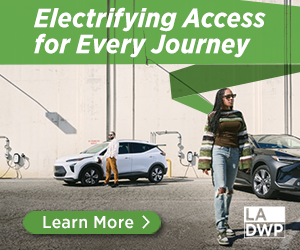Comments
FIRE AFTERMATH - My house survived the January wildfires, but it’s unlivable. I’m a Mandeville Canyon resident, and I witnessed the heroic efforts to stanch the fires and prevent the flames from leaping over Mulholland ridge into Encino or across the 405 Freeway. But what saved my neighborhood also poisoned it–– tons of bright pink Phos-Chek fire retardant, laden with toxic heavy metals like cadmium and chromium, was dropped down onto our neighborhood. Plus, heavy winds swept lead-filled ash into our homes; many that are standing are still uninhabitable.
Almost eight months later, I remain displaced, living out of suitcases as I navigate bureaucracy. The complicated insurance process has stalled so long that I’ve had to apply for a loan to remediate my contaminated home. The scope is overwhelming: I’ll have to remove and replace all of the soft materials in my home––from shades and carpets to furniture and bedding; deep clean every ash-filled and Phos-Chek stained vent, seal, room, and crawl space; replace HVAC ducting and insulation, and more.
But as I tackle this extensive clean up, I also have an opportunity to create a safer home. In addition to hardening my home against future fires, I can fully electrify.
Why make my home all-electric? Like Phos-Chek and ash, methane gas is also toxic. Gas furnaces and water heaters combust methane, a fossil fuel, that pollutes indoor and outdoor air. Gas stoves leak cancer-causing benzene even when they are not in use––reaching levels on par with cigarette smoke. After the wildfires, I don’t want to breathe toxic air, much less create it in my own home. I want the healthiest and safest home possible.
I’m not alone in this. Across fire-ravaged communities, families are facing the same choice: rebuild with polluting fossil fuels or seize this moment to create truly healthy homes. This is why I’m calling on Assemblymember Jacqui Irwin and Senator Ben Allen to make sure that my neighbors who are remediating and building back homes have the opportunity to get rid of gas and create the cleanest, safest homes possible.
To do this, our state leaders need to ensure the Cap-and-Trade program, which invests in programs that reduce greenhouse gas emissions, supports Californians like those of us who want to rebuild all-electric after climate disasters and upgrade our homes with clean energy technologies like heat pumps.
My community deserves safety, health, and efficiency during this long road of recovery, remediation, and rebuilding. All-electric homes are faster and more affordable to build than homes connected to gas, and they’re also safer, healthier, more climate-resilient against extreme weather, and can help save on energy bills.
The January fires that forced me from my home were fueled by climate change: and our gas-burning homes are fueling that same crisis. We can’t just rebuild; we need to ensure our homes are part of the solution to ensuring fires like these don’t happen again.
As an Angeleno, I want to see my city and state show its climate leadership now more than ever. Forty percent of the climate pollution in the city is produced by our homes and other structures, more than any other sector-–even cars. This climate pollution creates smog and worsens air quality, extreme heat, and wildfires. If we’re going to meet Los Angeles’ target of running on 100% renewable energy by 2045 and the state’s goal of reaching net-zero emissions by the same year, we need bold action.
I urge Assemblymember Jacqui Irwin and Senator Ben Allen as well as other state leaders to prioritize funding for programs that support home electrification and expand access to heat pumps. We need safer and healthier homes now—we can’t delay. The future of the planet depends on it.














